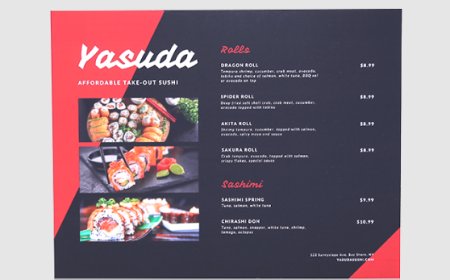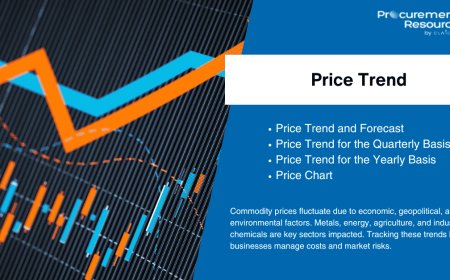Landing Page Optimization for Better Conversion Rates
In todays competitive digital environment, your landing page isn't just a gateway to your businessits often the first and only chance to convert a visitor into a customer. The effectiveness of that page determines the success or failure of your marketing efforts. A well-designed landing page can dramatically increase conversion rates, turning clicks into leads or sales. But without the right optimization strategies, even a beautifully designed page can fall flat. This article explores proven methods for Landing Page Optimization to help you achieve better conversion rates and boost your campaign performance.
Why Landing Page Optimization Matters
At its core, landing page optimization is the process of improving each element of a landing page to maximize the percentage of visitors who complete a desired actionwhether its filling out a form, making a purchase, signing up for a newsletter, or downloading a resource. Unlike homepages that serve multiple purposes, landing pages are hyper-focused and aim to guide the user toward one single call-to-action (CTA).
Businesses often spend a large portion of their budget on ads and traffic generation without realizing that their low conversion rates stem from poorly optimized landing pages. If your bounce rates are high or your lead quality is low, the issue may not be your traffic source but what your visitors see after they click. Thats where intelligent optimization comes into play.
Elements of a High-Converting Landing Page
Creating a landing page that performs well begins with understanding the psychology and behavior of your audience. A high-converting page combines compelling copy, intuitive design, trust signals, and a seamless user experience.
The headline is the first thing users see and should directly address their needs or desires. A good headline is clear, benefit-driven, and aligned with the ad or link that brought the visitor to the page. If your headline fails to grab attention, the rest of your page may never get read.
Next comes the visual hierarchy. Users scan rather than read, so structuring your content with strong subheadings, contrasting colors, and strategically placed CTAs ensures they find what they need quickly. Imagery should reinforce the offernot distract from it. Product photos, demo videos, or hero shots of happy customers work well when placed strategically to reduce friction and build trust.
The body copy should be concise yet persuasive, addressing potential objections before they arise. Incorporate testimonials, trust badges, and statistics to build credibility. Visitors want to feel assured that taking action on your page is safe and beneficial. Social proof, in particular, can be a powerful trigger for conversions.
Landing Page Optimization: Testing, Tweaking, and Trust
Optimization is not a one-time taskits a continuous process that involves rigorous testing and ongoing refinements. A/B testing, or split testing, is essential. By comparing two versions of a landing page with slight variations (such as different headlines, CTA buttons, or imagery), marketers can identify which version converts better.
Tools like Google Optimize, Optimizely, or VWO allow you to set up experiments and measure performance. Start by testing high-impact elements such as your headline, CTA placement, and color schemes. Once you find a winning combination, move on to finer details like form length, font size, and button copy.
Another core principle of optimization is reducing cognitive load. Keep forms short and only ask for essential information. A user is more likely to convert when the process feels quick and easy. Loading speed also plays a critical rolepages that take more than three seconds to load often see dramatic drop-offs in engagement.
Conversion-focused landing pages also need to be mobile-friendly. With over half of internet traffic coming from mobile devices, your page should adapt seamlessly to different screen sizes. Use responsive design techniques and prioritize thumb-friendly navigation to ensure users on smartphones or tablets can complete your CTA without frustration.
Leveraging Data for Smarter Optimization
Analytics are your best friend when it comes to identifying whats working and whats not. Use heatmaps and session recordings from platforms like Hotjar or Crazy Egg to visualize how users interact with your page. These insights can reveal surprising behaviorslike areas users are ignoring or where theyre hesitating.
Combine behavioral data with funnel analytics to identify where in the journey users are dropping off. Are they leaving at the form? Are they scrolling but not clicking the CTA? Answering these questions can guide your next round of optimizations.
You can also segment your traffic to deliver personalized landing pages based on user type, behavior, or source. For instance, a visitor from a paid search campaign might respond better to a page that reflects the exact ad copy they clicked, compared to a generic version. Personalization helps increase relevance, which naturally boosts conversions.
Integrating Landing Page Strategy into Performance Marketing
Landing pages are not isolated assetstheyre critical components of a broader marketing ecosystem. In a structured performance marketing course, you'll learn how landing page strategies tie into paid ad funnels, retargeting campaigns, and CRM integration. The landing page acts as a linchpin where campaign effectiveness is often won or lost.
For example, if youre running a Google Ads campaign targeting a specific keyword, your landing page must not only include that keyword but deliver on the promise made in the ad. A mismatch in message or tone can lead to lost conversions and wasted budget. Similarly, if your Facebook campaign targets users at the consideration stage, your page should reflect more persuasive elements like testimonials or detailed product specs.
Good performance marketing also involves retargeting users who visited your landing page but didnt convert. By aligning retargeting ads with the landing page content they previously viewed, you can nudge them back with more relevant offers or stronger CTAs.
Common Mistakes to Avoid
Despite all the best practices available, many businesses still fall into common pitfalls when optimizing landing pages. One of the biggest is information overloadtoo much content, too many links, or too many CTAs can confuse the visitor and dilute your message. Every element on your landing page should serve a purpose and drive the user toward the desired action.
Another frequent mistake is neglecting mobile optimization. Even in 2025, a surprising number of pages still deliver poor mobile experiences. If your page is hard to navigate on a phone, your conversion rates will suffer.
Lastly, failing to track and analyze results is a missed opportunity. Without clear metrics and testing, youre operating in the dark. Use data to drive decisions, not assumptions.
Conclusion: Turn Clicks into Conversions with Strategic Optimization
Landing page optimization is a powerful lever in your digital marketing toolbox. It turns passive clicks into active engagement and ultimately into revenue. By focusing on user intent, simplifying design, testing relentlessly, and integrating with your performance marketing strategies, you can significantly improve your conversion rates.
As the digital landscape evolves, the principles of effective landing pages remain grounded in understanding human behavior, addressing pain points, and making it as easy as possible for users to say "yes." Whether you're promoting a SaaS product, an eCommerce offer, or even an educational program, the strength of your landing page will often determine the ROI of your campaign.
To keep improving, stay updated with platforms like CXL Institute, Nielsen Norman Group, and HubSpots optimization reports. These resources regularly publish new trends, user studies, and optimization frameworks that can guide your strategy.
The path to better conversions starts with one thing: optimizing your landing page the right way.











































